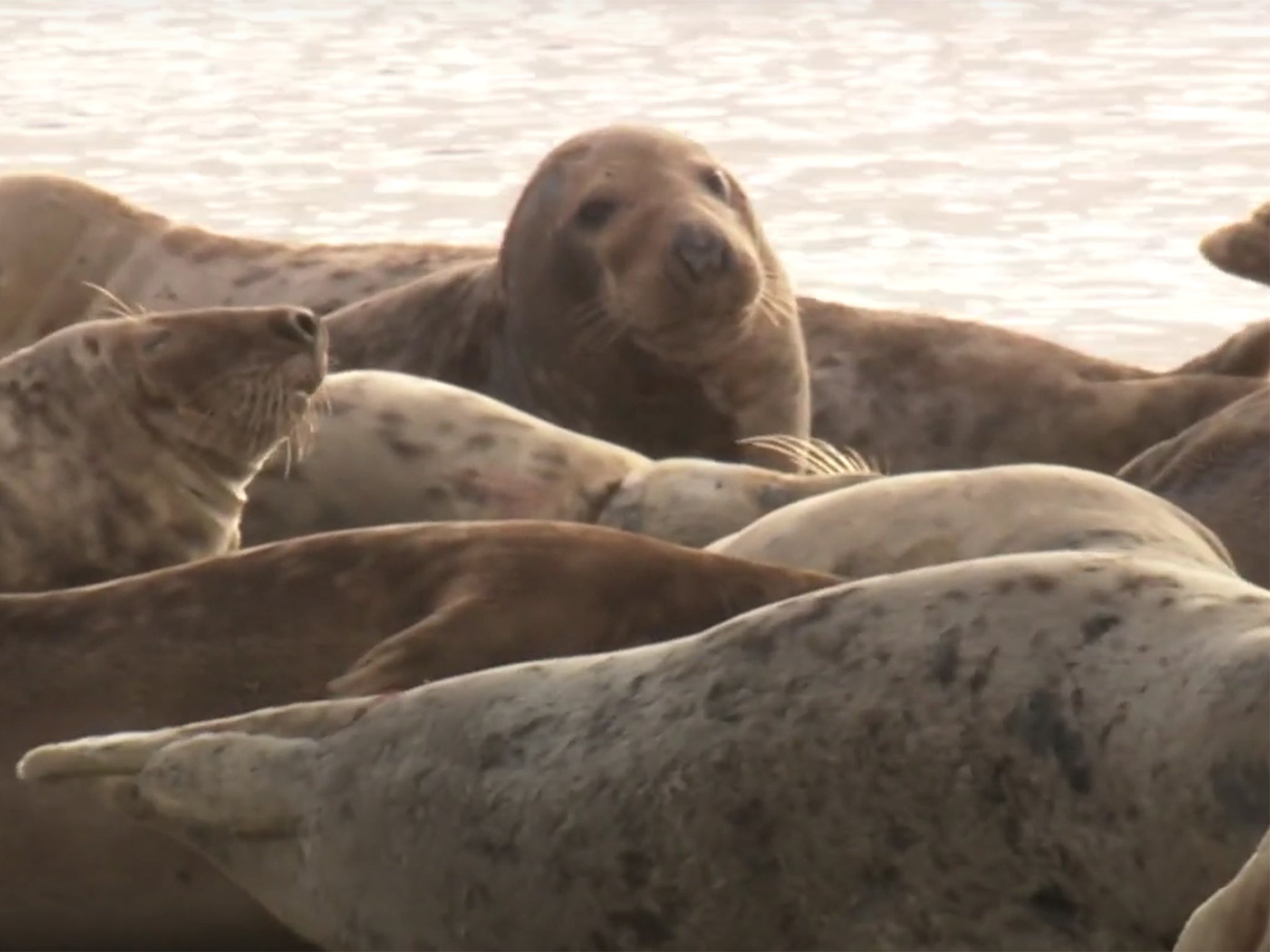Record grey seal numbers counted at Cumbria nature reserve through drone surveys
‘Exciting news’ as conservationists see five-fold increase in population over last decade

More than 500 grey seals have been recorded at a Cumbrian nature reserve for the first time, thanks to the use of drone technology to monitor the animals.
Cumbria Wildlife Trust said it had counted 518 seals at the South Walney Nature Reserve in Barrow between September 2020 and March this year.
The figure is a jump of 7.2 per cent on the results published in March 2019 (483 seals) and a 43.9 per cent increase on the figure from 2018 (360 seals).
Drone surveys have been carried out fortnightly in the reserve from September to March to monitor the population, with data collected on the marine mammals’ behaviour to assess how they are impacted by human disturbances.
“This is very exciting news and is a five-fold increase in the population of grey seals during the nine years that I’ve been with the trust,” Dr Emily Baxter, senior marine conservation officer at Cumbria Wildlife Trust, said.
The grey seal is the largest of the two seal species found in the UK, alongside the common seal.
To monitor the population at South Walney by drone, conservationists had to request special permission from Natural England and had to fly the aircrafts at a high level to avoid distressing the seals and other wildlife.
Dr Baxter said volunteers also continued manually counting the animals in order to compare the two data sets, but she noted that the drones gave the nature reserve “more accurate numbers”.
South Walney Nature Reserve is the only grey seal colony in Cumbria.
The Wildlife Trusts has estimated that there are more than 120,000 grey seals in the UK – about 40 per cent of the world’s population.
Seal beaches have been closed to the public in order to protect the animals from disturbances by people and dogs.
However, there were problems during the coronavirus lockdown with people landing kayaks on protected areas, causing disturbances and scaring some of the seals into the water.
“When seals are disturbed, they flee into the sea, using up important energy stores,” Dr Baxter added.
Earlier this month, a government-backed campaign urged members of the public to give seals space on UK coastlines, with dog owners encouraged to keep their pets on a lead wherever seals might be present.
The advice from a coalition of regional marine wildlife groups warned against getting too close to the animals due to the risk of injury and death for seal mothers and pups.
Cumbria Wildlife Trust has asked people who wish to see the seals up close to do so through the ‘seal cam’ which is livestreamed on its website.
Join our commenting forum
Join thought-provoking conversations, follow other Independent readers and see their replies
Comments